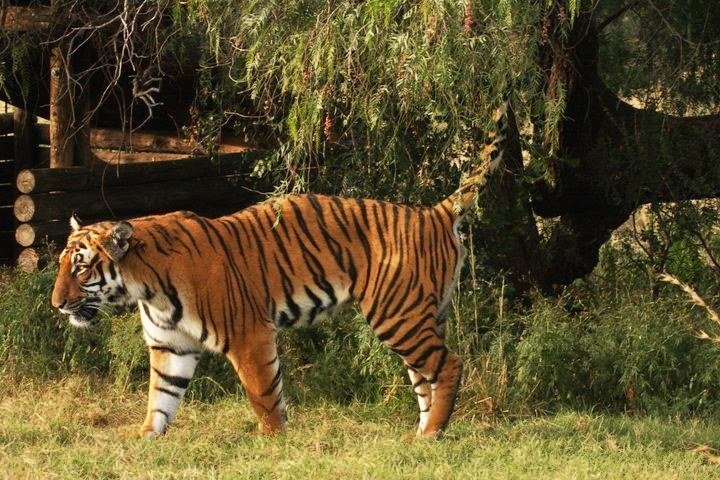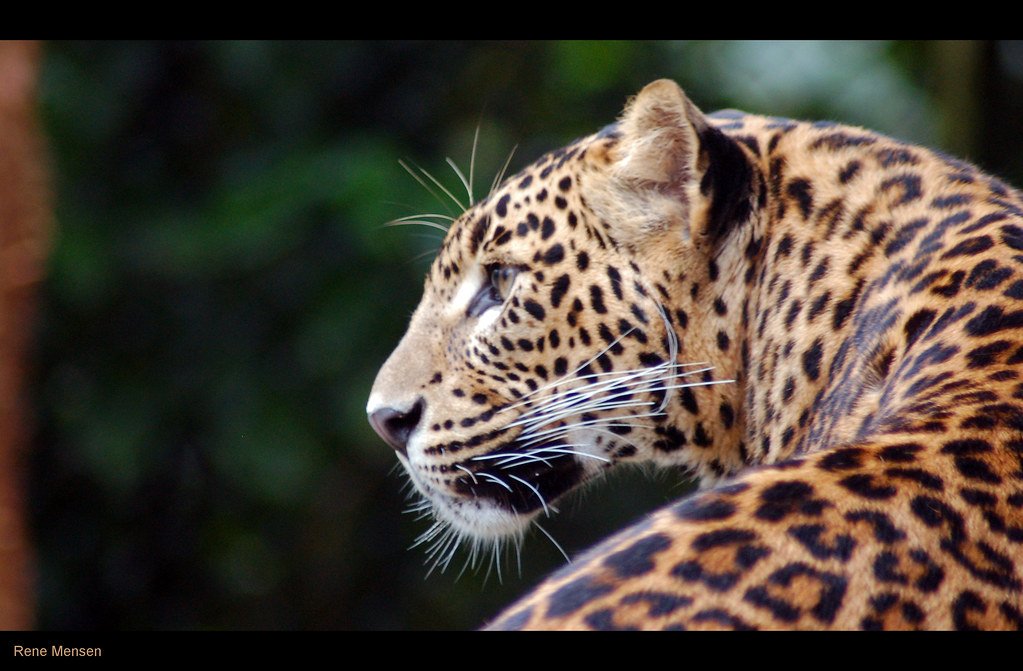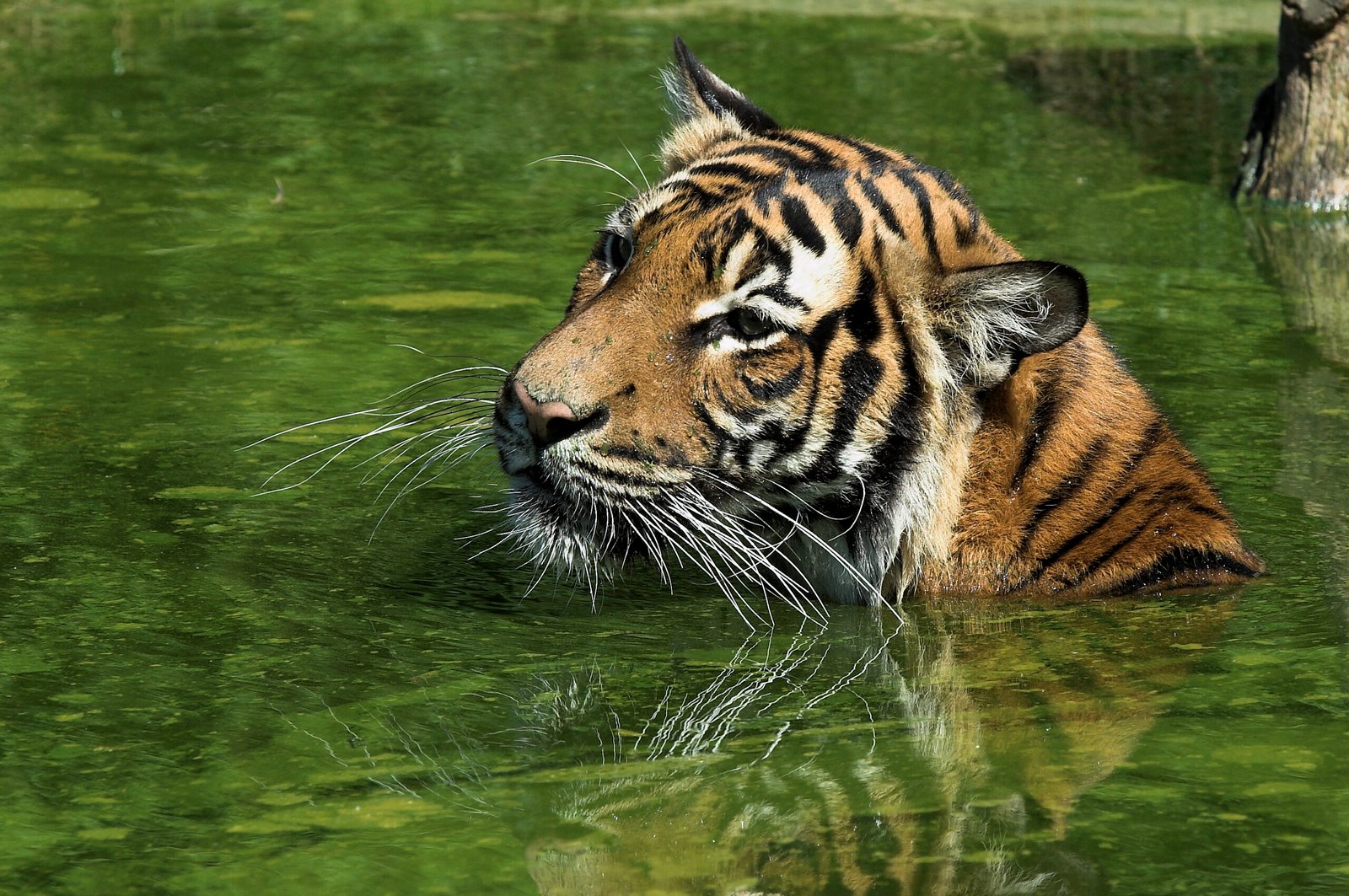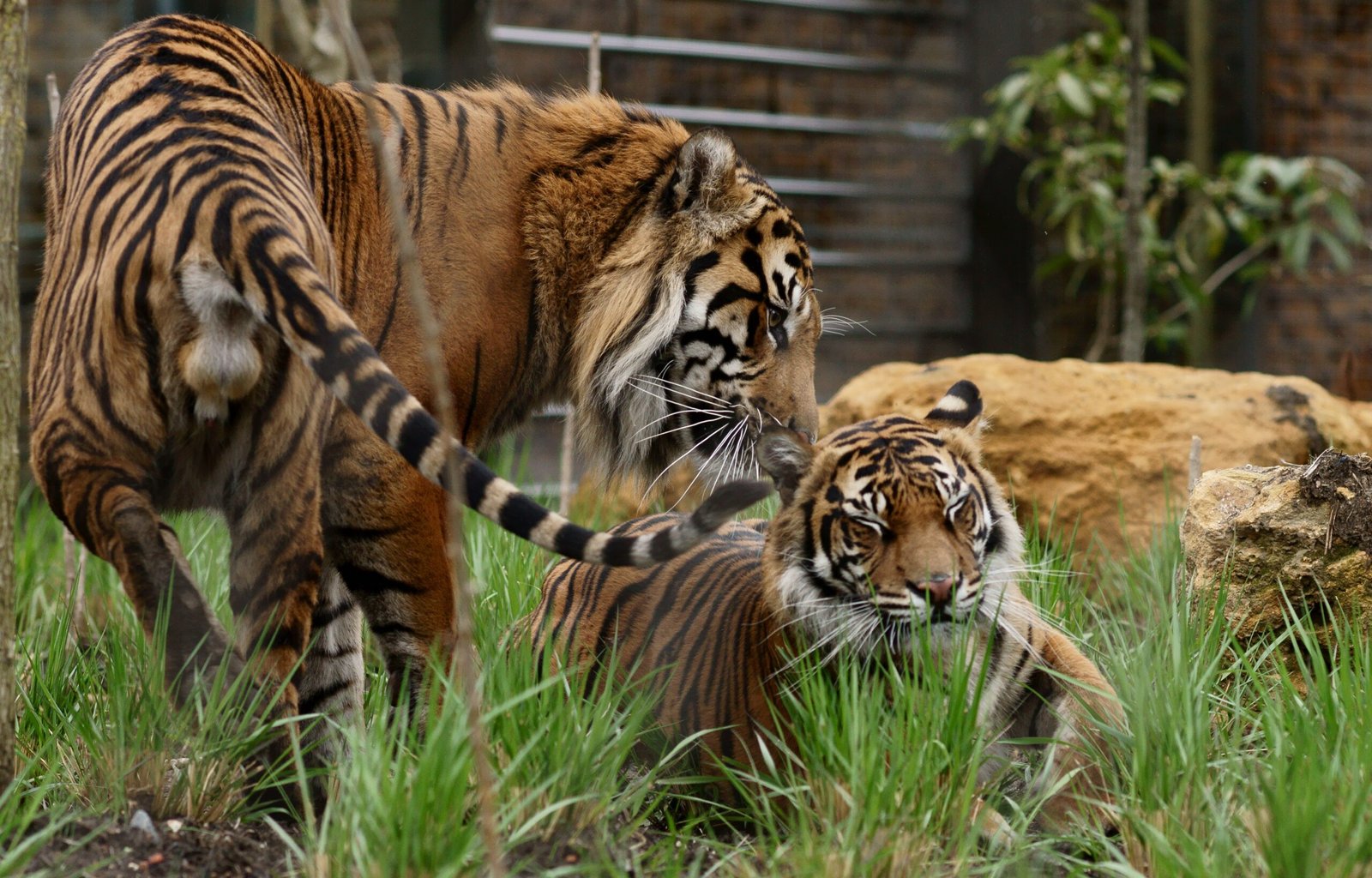The Invisible Fortress of Scent

Tigers don’t build walls around their territory — they paint them with scent. Every tree, rock, and pathway becomes a billboard announcing their presence to other tigers. These invisible boundaries are as real as any fence, marked with a cocktail of urine, feces, and secretions from special glands.
A single tiger’s territory can span up to 400 square miles, depending on prey availability and habitat quality. Males typically claim larger territories that overlap with several females, creating a complex social map that only tigers can truly read.
The Art of Claw Communication

Those massive claw marks gouged into tree bark aren’t just for sharpening — they’re tiger graffiti. Each scratch tells a story about the tiger’s size, strength, and recent presence in the area. The height of the marks reveals how tall the tiger is, while the depth shows their power.
Tigers can extend their claws up to 4 inches long, making these territorial markers visible from impressive distances. Fresh scratches smell strongly of the tiger’s scent, creating a multi-sensory warning system that lasts for weeks.
Night Patrol: The Silent Guardian

While humans sleep, tigers become restless boundary inspectors. They patrol their territories mostly at night, covering miles of terrain in a single evening. Their padded paws make almost no sound as they navigate through dense vegetation, checking scent marks and listening for intruders.
This nocturnal patrol isn’t just about territory — it’s about survival. Tigers must constantly monitor for prey movements, competing predators, and potential mates. A single night’s patrol can involve walking 15 to 20 miles through challenging terrain.
The Ambush Master’s Hunting Ground

Tigers don’t chase their prey like lions do — they’re ambush artists who turn their territory into a deadly maze. Every waterhole, game trail, and thick patch of vegetation becomes a potential hunting blind. They know exactly where deer come to drink and which paths wild boar prefer.
Success rates for tiger hunts are surprisingly low, with only about 10% of attempts ending in a kill. This is why territorial knowledge is so crucial — tigers must maximize their hunting opportunities by knowing their landscape intimately.
Water: The Tiger’s Secret Weapon

Unlike most cats, tigers are exceptional swimmers who use water as both hunting ground and escape route. Their territories often center around water sources, giving them a massive advantage over prey animals that must drink daily. Many tigers have been observed swimming across rivers over a mile wide.
Water also serves as a cooling system in hot climates. Tigers can often be found lounging in shallow streams or ponds, using their unique relationship with water to regulate body temperature while staying alert for hunting opportunities.
The Roar That Travels Miles

A tiger’s roar isn’t just intimidating — it’s a long-distance communication system that can be heard up to 2 miles away. This vocalization serves multiple purposes: warning other tigers, calling to potential mates, and asserting dominance over vast territories. The sound carries special low-frequency vibrations that can be felt as much as heard.
Each tiger’s roar is unique, like a vocal fingerprint. Researchers can identify individual tigers by analyzing their roar patterns, which vary in pitch, duration, and frequency depending on the message being conveyed.
Prey Psychology: Reading the Menu

Tigers are behavioral psychologists who study their prey with scientific precision. They learn the daily routines of deer herds, the feeding patterns of wild boar, and the watering schedules of various species. This knowledge turns their territory into a predictable restaurant where they know exactly when and where to find their next meal.
Different prey species require different hunting strategies. Tigers adjust their approach based on whether they’re hunting fast-moving deer, aggressive wild boar, or massive water buffalo. Their territory becomes a testing ground for these varied hunting techniques.
The Solitary Ruler’s Domain

Tigers are the ultimate introverts of the big cat world, preferring to rule their territories alone. Unlike lions who hunt in prides, tigers have evolved to be completely self-sufficient. Their territories are designed for solo living, with enough resources to support a single large predator year-round.
This solitary lifestyle means tigers must be experts at everything — hunting, fighting, territory maintenance, and raising young. There’s no backup plan or family support system, making territorial control absolutely critical for survival.
Seasonal Territory Shifts

Tiger territories aren’t static maps — they’re dynamic systems that change with the seasons. During dry seasons, tigers may shift their focus toward permanent water sources. In monsoon seasons, they might expand into areas that become accessible only when water levels rise.
Pregnant females often establish smaller, more secure territories within their usual range, focusing on areas with dense cover and reliable food sources. These maternal territories become temporary fortresses designed specifically for raising vulnerable cubs.
The Economics of Energy

Managing a tiger territory is like running a complex business where energy is the only currency. Tigers must balance the energy spent patrolling and maintaining their territory against the energy gained from successful hunts. Too much territory means exhaustion; too little means starvation.
A single kill can provide enough calories for several days, but tigers must still invest significant energy in territorial maintenance. This delicate balance explains why tiger territories are so precisely sized — they represent the optimal trade-off between resources and energy expenditure.
Invisible Highways of the Wild

Tigers create and maintain an intricate network of paths throughout their territory, like a highway system invisible to human eyes. These routes connect hunting grounds, water sources, resting spots, and territorial boundaries. Over generations, these paths become deeply ingrained in the landscape.
Other animals often use these tiger highways, creating a complex ecosystem of shared transportation routes. However, smaller animals must time their travel carefully to avoid encountering the territorial owner.
The Inheritance Wars

When a territorial tiger dies or weakens, their domain doesn’t remain empty for long. Young tigers, especially males, engage in intense competitions to claim these valuable territories. These inheritance battles can last for months, with multiple tigers testing boundaries and fighting for control.
The winner of these territorial disputes inherits more than just land — they gain access to established hunting grounds, scent-marked boundaries, and knowledge of prey patterns. It’s like inheriting a fully operational kingdom with all its infrastructure intact.
Climate Change and Shifting Kingdoms

Modern tigers face unprecedented challenges as climate change alters their traditional territories. Rising temperatures, changing rainfall patterns, and shifting prey populations force tigers to adapt their territorial strategies. Some territories that supported tigers for generations are becoming uninhabitable.
Tigers demonstrate remarkable adaptability, but there are limits to how much territorial flexibility they can maintain. Conservation efforts now focus on creating corridors that allow tigers to shift territories as environmental conditions change.
The Technology of Territory

Modern tiger research uses GPS collars, camera traps, and satellite imagery to map tiger territories with unprecedented precision. These technological tools reveal the complexity of territorial systems that were previously invisible to human observers. We now understand that tiger territories are far more sophisticated than anyone imagined.
This technology also helps conservationists identify critical territorial corridors and protect essential habitat connections. Understanding territorial behavior has become crucial for developing effective tiger conservation strategies.
Living Legends in a Shrinking World

Today’s tigers rule over kingdoms that are shadows of their former glory. Historical territories that once spanned thousands of square miles have been fragmented into isolated patches. Modern tigers must be more efficient territorial managers than their ancestors, making every square mile count.
Despite these challenges, tigers continue to demonstrate their remarkable ability to adapt and survive. Their territorial instincts, refined over millions of years of evolution, remain their greatest asset in an increasingly challenging world. These striped monarchs prove that with proper protection and understanding, even the wildest kingdoms can endure.
Hi, I’m Bola, a passionate writer and creative strategist with a knack for crafting compelling content that educates, inspires, and connects. Over the years, I’ve honed my skills across various writing fields, including content creation, copywriting, online course development, and video scriptwriting.
When I’m not at my desk, you’ll find me exploring new ideas, reading books, or brainstorming creative ways to solve challenges. I believe that words have the power to transform, and I’m here to help you leverage that power for success.
Thanks for stopping by, Keep coming to this website to checkout new articles form me. You’d always love it!






